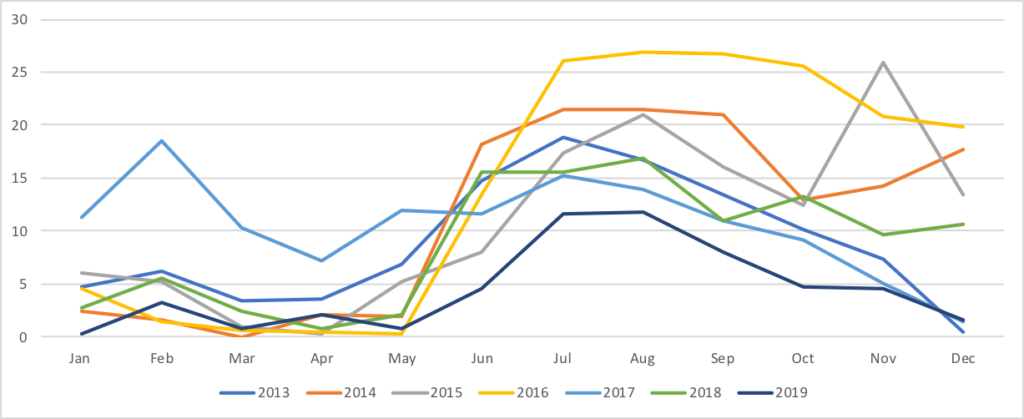Recent figures show that the level of campylobacter in Swedish poultry for meat production is all-time low. Calculated average from sampling in 2019 landed at 4.6 percent.
– Every year, we calculate an average of campylobacter presence in Swedish poultry for meat production. The figures for 2019 showed at a record low, and the yearly average ended up at only 4.6 percent – halving last year’s figures. This is a huge difference compared to the rest of Europe where there is a large spread in prevalence, and figures of 50-80 percent are not uncommon, says Pia Gustavsson, veterinarian, the Swedish Poultry Meat Association.
The campylobacter program measures prevalence
Sweden is one of the countries in the world that has come the furthest in minimizing the presence of campylobacter in poultry. Since the mid-1980s, the Swedish Poultry Meat Association has been working actively to reduce the presence of campylobacter in poultry flocks. The ambition of the industry is to reach the same low levels as for salmonella.
In 1988, the Swedish Poultry Meat Association, together with the authorities the Swedish Board of Agriculture, the Swedish National Food Agency and the Swedish Veterinary Institute (SVA) and the Swedish Institute of Infectious Diseases (now the Public Health Agency) started a monitoring program with the aim of reducing the prevalence of campylobacter in Swedish poultry. Within the campylobacter program, research and studies are being conducted at farm level including sampling to further reduce the number of positive poultry flocks.
Due to the actions taken, the number of positive flocks have lowered from about 60 percent in 1989 to 4.6 percent in 2019. The reason why the campylobacter levels are so low is due to the fact that the members of the Swedish Meat and Poultry Association follow the advice developed within the campylobacter program, which mainly focuses on preventive hygiene practices.
– We find it gratifying that the industry’s work, mainly the preventive hygiene efforts within the poultry production, has yielded such good results and that the positive trend will continue, says Karin Åhl, Disease control, Swedish Board of Agriculture.
– Hygiene in the kitchen plays a vital role to reduce the risk of presence of campylobacter when handling food. Washing hands, using separate cutting boards for chicken and vegetables as well as heating to at least 70 degrees are simple and great guidelines to follow, says Pia Gustavsson.
More information and contact:
Pia Gustavsson, veterinarian, the Swedish Poultry Meat Association
pia@svenskfagel.se
Senast uppdaterad: 23 januari 2020